Machine Setup: Adjusting Jointer Tables
Woodworking instructor Matt Wajda shows how to set the jointer tables using only a straightedge and some scraps of paper.
When a machine is tuned up and maintained properly, it will not only make your woodworking more accurate, but it will also make your time in the shop more enjoyable. Woodworking instructors Matt Wajda and Ellen Kaspern have spent countless hours behind machines making furniture, and they’ve also taught classes on setting up and maintaining machinery. In this video workshop series, Matt and Ellen will show you what they know, guiding you through each critical machine in the shop.
Ellen will show you how to tune up your tablesaw: making the miter slots parallel to the blade, setting the fence parallel to the miter slots, setting the tabletop parallel to the angle of the blade, and finally lubricating all of the moving parts.
On the bandsaw, Ellen will make sure that the blade is tracking properly by setting the wheels coplanar to each other, crowning the tires, and setting the tilt and tension on the top wheel. Finally she’ll set the bearings and guide blocks.
On the planer, Matt will set the bed parallel to the cutterhead and set the knives. Then he’ll use a gauge block and a shim to set the cutting circle, infeed rollers, pressure bar, and outfeed rollers. To finish it off, he’ll clean and lubricate the machine.
Matt will also show how to tune up the hollow-chisel mortiser, setting the fence parallel to the chisel, making sure the bed is perpendicular to the fence, and ensuring that the chisel and tables move smoothly and accurately.
In this episode
Matt will demonstrate how to make sure jointer’s tables are coplanar, checking for wind and shimming if necessary. In the next episode he’ll show how to set the knives using the outfeed table as a reference, and set the depth of cut.
Videos in the Series
-
An Introduction to Machine SetupJuly 23, 2018
-
Machine Setup: The Table SawJuly 23, 2018
-
Machine Setup: Adjusting Jointer TablesJuly 30, 2018
-
Machine Setup: Setting Jointer KnivesJuly 30, 2018
-
Machine Setup: The BandsawAugust 7, 2018
-
Machine Setup: Hollow-Chisel MortiserAugust 13, 2018
-
Machine Setup: The PlanerAugust 20, 2018

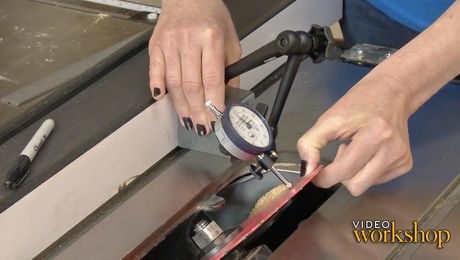
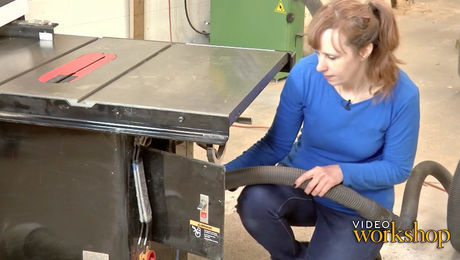
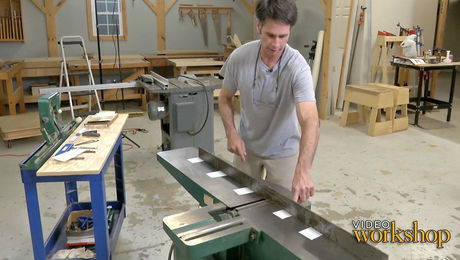
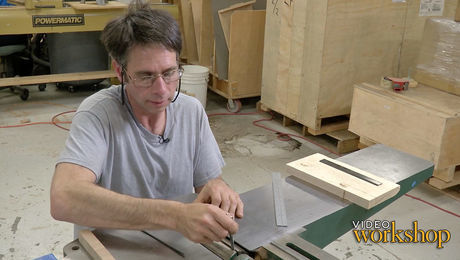
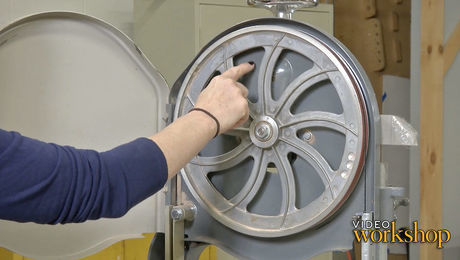
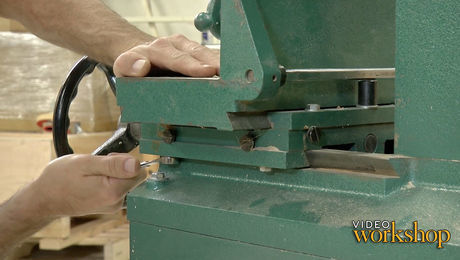







Comments
This series has come at a very opportune time, as I am completing the restoration on my 1966 Northfield HD / Porter 301 jointer. Thanks for the tips!
https://instagram.com/p/Bl9DgTwgoaZ/
http://www.instagram.com/thegraindoctor
Matt - what is the recommended period between maintenance cycles?
Why do you have a 'Powermatic' label on what is obviously a Grizzly?
Surely, you're joking, right?
Thanks for this video - very useful.
I am a little confused about the decision to shim the outfeed table. At around 3:30-3:50 into the video, Matt concludes that the tables appear to be leaning in the same direction. The way he holds his arms at 3:50 looks like another way to say "the outfeed table is a little higher than the infeed table". It is not obvious that there is an angle between the tables. For all I understand, the tables may at that point be parallel but just not coplanar. If the infeed table had just been adjusted a little upwards/forwards, could it not have turned out that they were already parallel?
You're somewhat correct. The tables might be parallel, but it could be said that using Matt's simple set of tools, you can't really prove that they are until they're parallel and coplanar. Once you're committed to doing a setup, you might as well make sure that the tables are coplanar since the process was probably the least tedious aspect of the setup. Then, going forward, you KNOW you're good! Did this machine need a setup? Probably not, but that wouldn't have made much of a video now would it?
Great to see this series. We love the master craft videos showing the experts!!! But for the ordinary person starting out - this will make all the difference in the world!
I followed this procedure for tuning up a 6" Delta Jointer. However, a strange thing happened: all the paper shims on the infeed table are tight under the straight edge, the inner and outer ones on the outfeed are also tight, but the middle one on the outfeed is slightly loose (it has a little purchase, but is still looser than the other two). This is probably good enough, but I'm wondering how that arrises and how one corrects it. Is the outfield table warped?
Put your straight edge on it. Most likely it is warped or just not machined "perfectly" in the first place.
I have recently purchased an old General 8" jointer. From other videos I saw before this one I noticed that the tables were not coplanar. But with this joiner there is no play in the dovetails and the only way I could insert shims is to take the table off (poinding out the Gib with an old clamp bar), put the shim on and then pound the Gib back in. Now outfield adjustment is very difficult.
I am thinking of taking the Gib out and sand/grinding it down just to provide a little bit of clearance. Is that reasonable?
Log in or create an account to post a comment.
Sign up Log in